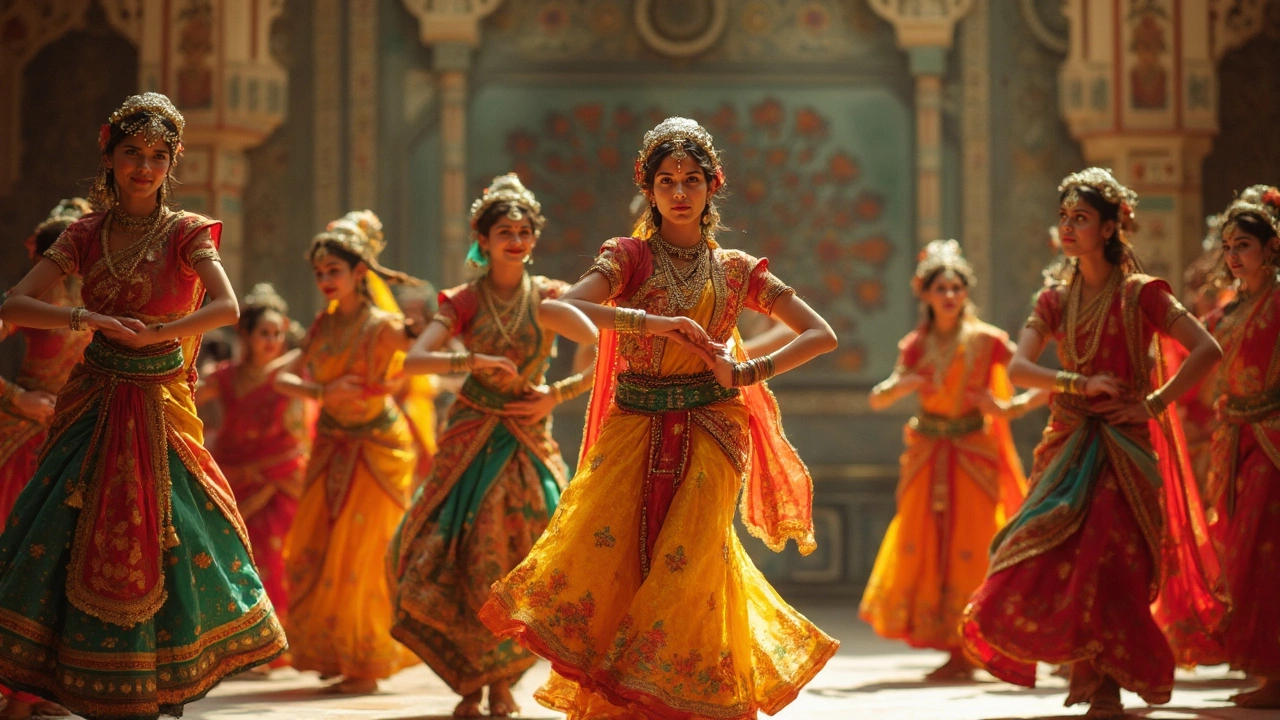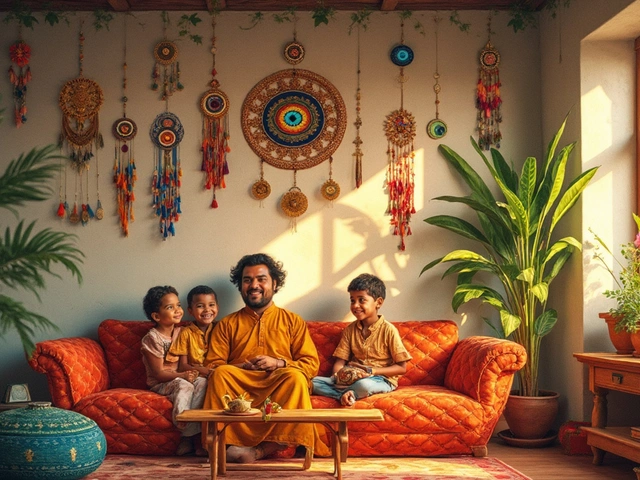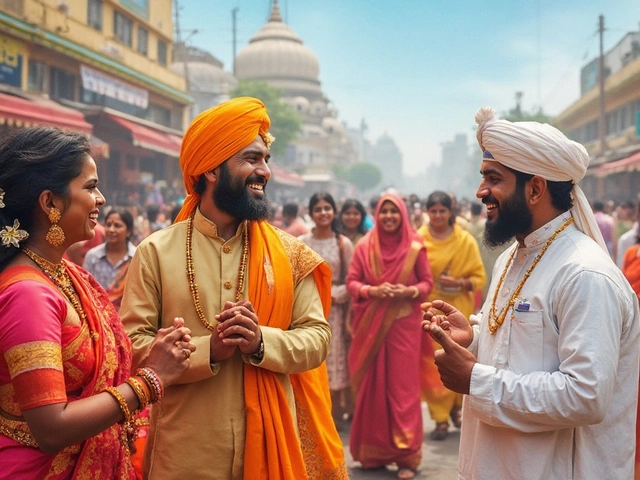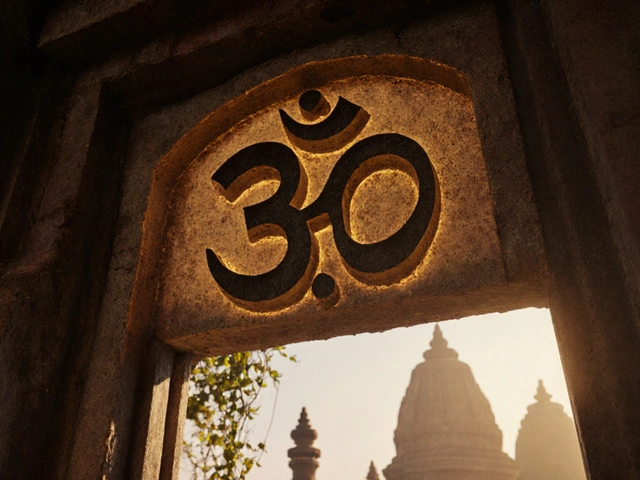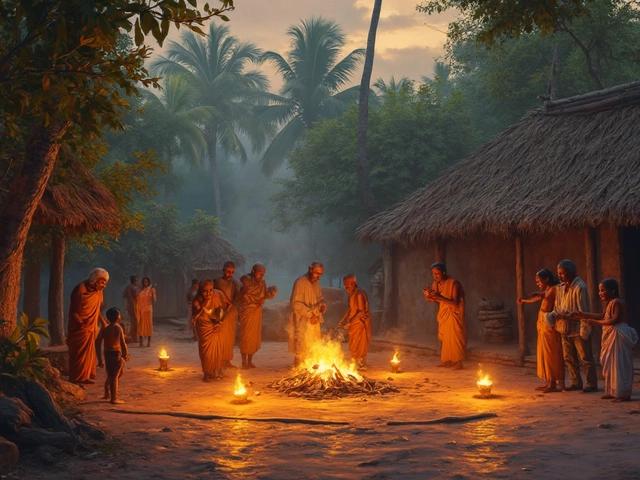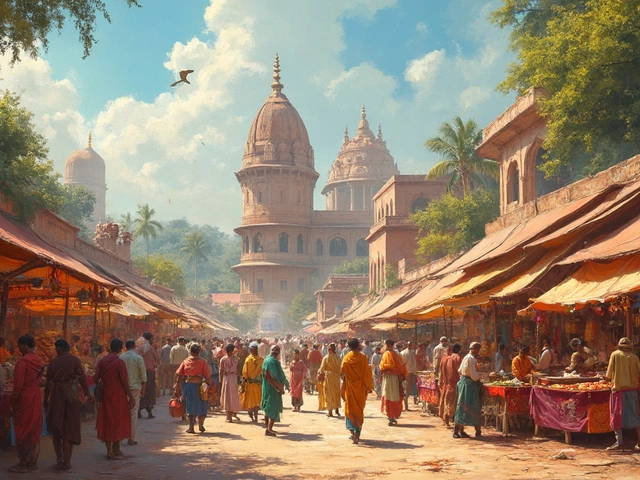Eastern dance grabs your attention the second the music starts—there’s just something wild and magnetic about it. Maybe you’ve seen it on TV, at weddings, or one of those viral beauty pageant clips. But what actually counts as 'eastern' dance, and why do people keep mixing up belly dance with everything else from the region?
If you’ve ever wondered why a belly dancer sways one way while a Bhangra dancer jumps another, you’re not alone. People often picture eastern dance as one big, glittery mashup, but the truth is, each style has its own roots and rules. Separating the styles helps you really get what’s going on, whether you’re trying to learn a few moves for fun or just want to be the friend who actually knows what they’re watching when the dancing starts.
This is more than just party tricks or TikTok trends. Eastern dance tells stories from real people’s lives: love, heartbreak, celebration, even protest. If you dig deeper, you find out dancers aren’t just moving—they’re passing down traditions that have lasted longer than most countries. Ready to unlock what makes eastern dance, well, eastern? Stick around as we break down concrete facts, quick tips, and things no one really talks about on YouTube tutorials.
- East vs. West: What Sets Eastern Dance Apart?
- The Many Faces of Eastern Dance: From Egypt to India
- Signature Moves and Props Explained
- What Do Those Costumes Really Mean?
- How to Get Started with Eastern Dance
- Misconceptions and Media Myths Debunked
East vs. West: What Sets Eastern Dance Apart?
It’s easy to lump all dance together, but there’s a world of difference between eastern and western styles. When people talk about eastern dance, they usually mean stuff from the Middle East, North Africa, Central Asia, and parts of South Asia. Western dance usually means things like ballet, ballroom, or hip-hop that come from Europe or North America.
One huge difference is the way dancers move their bodies. In most eastern dances, it’s all about isolating different body parts. You’ll see hips move while shoulders stay still, or hands do something completely separate from the feet. In western dances like ballet, the body often moves as a single unit and focuses on big lines and jumps. Eastern styles love grounded movements—dancers are barely off the floor, with bent knees and controlled steps.
Music is another big deal. Western dances often mirror the count or rhythm precisely, while eastern dance uses rhythms that can be tricky, like 9/8 or 7/8 beats you rarely hear in pop music. Plus, eastern dancers actually dance with the music, sometimes improvising when the drummer changes it up. There’s more room for play and surprise.
| Feature | Eastern Dance | Western Dance |
|---|---|---|
| Main Regions | Middle East, North Africa, Central Asia, South Asia | Europe, North America |
| Movement Focus | Isolation, grounded, micro-movements | Lines, jumps, whole-body movement |
| Music Rhythm | Complex (e.g., 9/8, 7/8) | Simpler (e.g., 4/4, 3/4) |
| Improvisation | Very common | Less common (except in some street styles) |
| Costumes | Region-specific, often layered or decorated | Tighter, standardized (like tutus, leotards) |
Another thing: a lot of eastern dance styles tell a story without any words. You’ll see gestures, facial expressions, or hand movements (like in Indian classical dance) carry all the meaning. Western styles do this too, but it usually takes a back seat to the actual steps, unless you’re watching modern dance or some types of ballet.
If you show up at a Middle Eastern wedding, expect to see dancing as an actual group activity, not just a performance to watch. Participation means everyone might get pulled onto the dance floor. In western events, dancing is still a big deal, but there’s a clearer line between performers and audience.
If you want to spot the differences in real life, just look for these signs: Is the dancer super light on their feet like a ballerina, or are they digging into the ground with slow, earthy moves? Is the music something you can easily clap to? These clues help you figure out if you’re watching eastern or western dance, even if you have no idea about the specific style.
The Many Faces of Eastern Dance: From Egypt to India
It’s wild how different eastern dance styles can be, even though people often lump them together. Let’s clear things up: this isn’t just about belly shaking or floating scarves. We’re talking about a spread of dances that cover thousands of miles, each totally unique in how it looks, sounds, and feels.
Eastern dance kicks off in North Africa and sweeps all the way to India. In Egypt, the spotlight is on Raqs Sharqi. This is the classic ‘belly dance’ that’s taken over restaurant shows everywhere. But in Egypt, it’s not just a tourist trap—weddings, family parties, and even street festivals use Raqs Sharqi to tell old stories, flirt, and sometimes just let off steam.
Move east, and you’ll see Turkish Oryantal, which mixes old Ottoman and Romani moves. It’s faster, with a lot more spins and tricks. The music’s punchier too. Crossing into Iran, dancers keep their arms flowing while the feet do delicate, precise steps. There’s more going on with the hands, less belly stuff, and a lot of moves that look like painting the air.
India’s scene is next level. There are eight main classical dances, each with steps and gestures that go back hundreds (or even thousands) of years. Bharatanatyam from South India uses sharp hand movements and foot stomps, while Kathak from the north spins stories with twirls, bells, and smooth turns. They’re teaching you about ancient myths, and if you pay attention, you’ll get the whole plot just from the moves, even if you don’t speak a word of Hindi or Tamil.
"Every region’s dance is like a slice of its people’s daily life—what they wear, what they worry about, and what makes them happy." – Professor Leila Hassan, World Dance Studies, 2021
If you want to spot the differences, look at costumes, music, and what part of the body does most of the work. Here’s what you’ll notice:
- Egypt: Lots of hips, sequined costumes, veils, and finger cymbals (called zills).
- Turkey: Bold skirts, snappy hip drops, heavy on spinning, and drum-heavy beats.
- Iran: Modest outfits, flowing arm lines, quick and smooth steps, Persian classical music.
- India: Rigid costumes (think saris or elaborate dresses), foot bells (ghungroos), and drama-heavy facial expressions.
And here’s a quick snapshot you can return to:
| Country | Famous Style | Key Feature | Traditional Music |
|---|---|---|---|
| Egypt | Raqs Sharqi | Hip work | Tabla, oud, ney |
| Turkey | Oryantal | Spins & bold hips | Davul, zurna |
| Iran | Persian Classical | Hand/arm focus | Setar, daf |
| India | Bharatanatyam, Kathak | Footwork & storytelling | Sitar, tabla |
Here’s the thing: if you only look at surface stuff (like coins on a belt or waving scarves), you miss the real juice. These aren’t party tricks—they’re living pieces of culture, shaped by history, music, and the everyday struggles and joys of whole communities.
Signature Moves and Props Explained
It’s the footwork, the hip moves, and the surprise props that really set eastern dance apart—and honestly, knowing what to look for makes watching it way more fun. Different regions highlight different parts of the body. For example, Egyptian belly dance (called Raqs Sharqi) is all about powerful hip drops, snake-like arm waves, and moves that isolate one muscle at a time. Compare that to Turkish Romani dance, where fast spins and energetic finger-snapping are the main features.
Major eastern dance styles each have their own signature moves:
- Egyptian Belly Dance: Hip shimmies, chest lifts, and sharp hip accents. It's not just about shaking—timing and muscle control matter more than you’d think.
- Persian Dance: Focuses on light, bouncy footwork and soft, fluttering fingers. Arms move in graceful curves, keeping everything above the waist looking smooth.
- Bhangra (India): Heavy stomps with high knees. Shoulders pop while dancers twirl bright scarves (called "rumal"). You’ll almost always see straight backs and huge grins.
- Dabke (Levant): Think of a group holding hands, stomping out complex rhythms with their feet. It’s all about teamwork and sharp, communal moves.
Props make eastern dance instantly recognizable. Some are practical, while others are all about style:
- Veils: Swirled, tossed, and used to hide or reveal parts of the body. Common in Raqs Sharqi.
- Swords: Usually balanced on the head or hips during slow drum solos—not as scary as it sounds, but definitely a crowd-pleaser.
- Finger cymbals (Zills or Sagat): Tiny metal discs strapped to dancers’ fingers for adding their own rhythm layer.
- Canes (Assaya): Used in Egyptian folk dance, especially by women imitating men’s stick-fighting moves in a playful way.
- Scarves and Dhol drum (Bhangra): Scarves for visuals, and a massive dhol drum to drive the beat. Someone always ends up jumping higher than everyone else.
Just for fun: ever wonder which dance needs the most gear? Take a look at this quick comparison:
| Dance Style | Common Props | Signature Move |
|---|---|---|
| Egyptian Belly Dance | Veil, sword, finger cymbals | Hip shimmy |
| Bhangra | Scarves, dhol drum | High knee stomp |
| Persian Dance | None or handkerchief | Graceful arm and wrist circles |
| Dabke | None | Group foot stomp |
If you ever decide to try eastern dance, don’t worry about buying a bunch of props at first. Most pros started by just nailing the basic steps in comfy clothes. Save the swords and jingly hip scarves for later—safety (and your dignity) comes first.
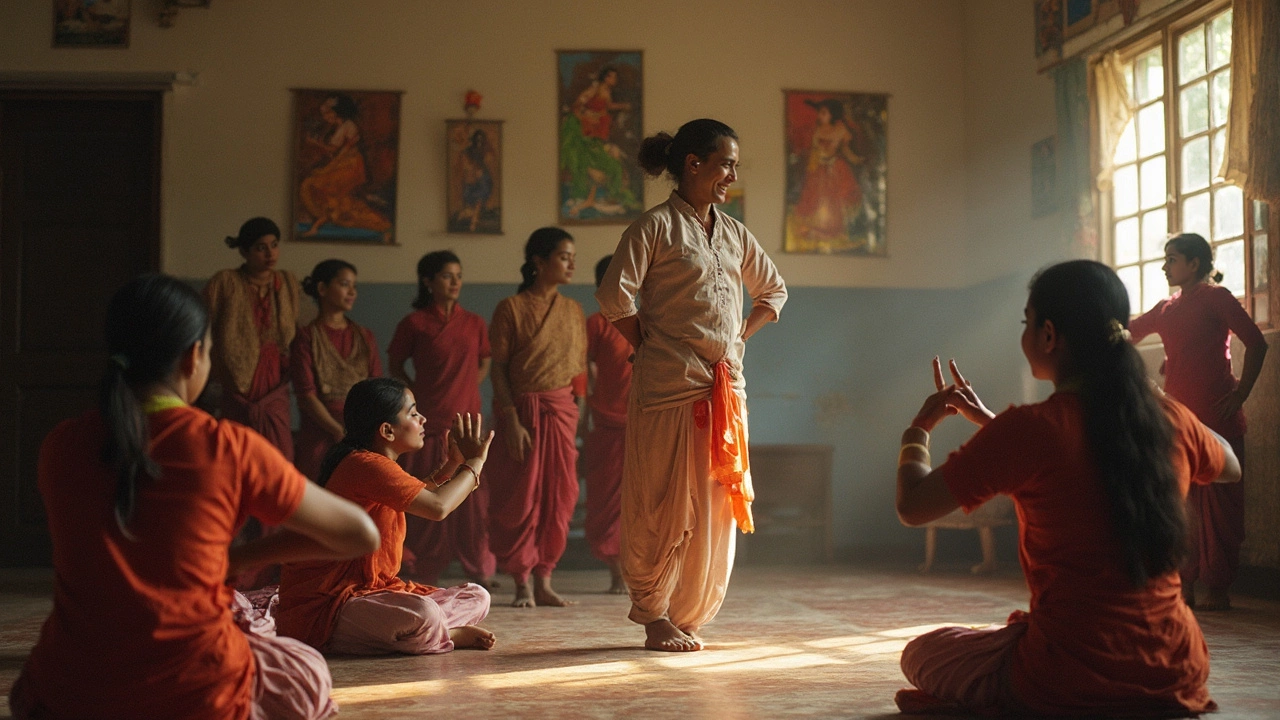
What Do Those Costumes Really Mean?
Those shiny outfits aren’t just for show—each costume in eastern dance actually gives you clues about where the dance comes from and what story it’s telling. The colors, fabrics, and accessories aren’t chosen at random. They tell you if a dancer is doing a classical performance, folk routine, or even the kind of celebration that’s happening.
Take belly dance, for example. The standard look—bedazzled bras, coin belts, and gauzy skirts—started as a way to stand out on stage in Egyptian cabarets during the early 20th century. Coins and fringe catch the light and make the dancer’s movements more noticeable. But if you go to a rural festival in Egypt, performers might wear simple cotton dresses called "baladi" because that’s what local women actually wear for social dances. The baladi dress covers more and focuses on strong, earthy movements, so the message changes with the outfit.
Look east to India, and you’ll see dancers in sari-like costumes or bold silks loaded with jewelry. In dances like Bharatanatyam or Kathak, the jewelry isn’t just decoration. Anklets with bells (called ghungroos) literally make the rhythm part of the show. The color of the costume might match the mood of a song—bright yellow for happy songs, deeper reds for love or longing.
There are rules and traditions, but there’s also a ton of flexibility and local flavor. Folk dances in Turkey, like Halay, use vests, wide belts, and colorful headscarves. In Central Asian dance, costumes might feature velvet tunics and fur hats to show off the region’s climate and culture. Even men’s costumes tell a different story—they’re often less flashy, but they show off power and athleticism, like the crisp white pants and embroidered jackets of Georgian dancers.
- If you see a lot of sparkle, you’re probably watching a stage version of belly dance rather than a traditional folk dance.
- Big skirts and shawls? Could be Romani (Gypsy) or Spanish-influenced styles mixed in.
- Check the shoes and jewelry—barefoot dancing is common in classical Indian styles, while thumb cymbals (zills) show up in Turkish or Arabic dance.
If you’re learning eastern dance, don’t get too caught up in buying the fanciest costume right away. Focus first on the basic moves and then choose an outfit that fits your chosen dance style. Costumes are about connecting to the dance’s roots, so finding out why a certain piece is worn makes the experience way more meaningful—and also avoids awkward mistakes at performances or classes.
How to Get Started with Eastern Dance
Diving into eastern dance isn’t as intimidating as it seems. Honestly, you don’t need six-pack abs, crazy flexibility, or even a costume at first. What really matters is picking a style you connect with and finding a community—online or offline—that helps you learn.
First step? Choose a style. Belly dance, also called Raqs Sharqi, is probably the most famous, but there are plenty more. If you’re more into high energy, Bhangra or Dabke might hook you. Each style uses different footwork, rhythms, and even attitude, so check out some videos or local showcases. You’ll quickly spot what excites you.
Most cities have at least one east dance school or community center offering beginner classes. Don’t stress about signing up for a long semester—a lot of places let you drop in for a single class to see how you vibe. For folks living in smaller towns, YouTube and sites like Datura Online or LearnBellyDance.com are stacked with step-by-step lessons. Just double check your source, since not every tutorial online is exactly accurate. Some pro instructors even offer Zoom classes now, so you don’t need to leave your living room unless you want to.
If you want to get a headstart before you show up, practice a few basics at home:
- Get used to isolating parts of your body—try moving your hips side to side while keeping your shoulders still, or wiggle your shoulders while your hips stay quiet. Feels weird at first, but it’s the core of most eastern styles.
- Pick a song with a solid beat (something from the region if possible) and clap along with the main rhythm. You’ll start to hear patterns after a few tries. Drummers call these rhythms “Maqsum” or “Ayoub” in belly dance, and each one creates a different mood on the dance floor.
- Stretch your ankles and calves—lots of eastern dance moves live on the balls of your feet, which can get tiring if you’re not used to it.
Worried about gear? Don’t be. For beginners, something comfy that lets you move—yoga pants, a tank, bare feet or socked feet. A coin scarf tied around the hips helps you hear your moves, but it’s totally optional at the start.
How long does it take to see real progress? It varies, but here’s a quick look at what most beginners experience:
| Time Spent | What You’ll Usually See |
|---|---|
| First month | Learn basic steps, simple isolations |
| 2-3 months | Handle beginner combos, basics start to feel natural |
| 6 months+ | Learn short routines, growing confidence in technique |
If you get hooked on the eastern dance world, don’t forget to check out local festivals or haflas (community dance parties). Those might seem intimidating, but everyone started somewhere, and these are the best places to meet people who share your new obsession. Plus, you pick up way more by seeing dancers live than watching on a screen.
Above all, remember: it’s about enjoying movement, not nailing every step. Even if your cat (looking at you, Whiskers) thinks your shimmies are strange, keep at it. Your progress will surprise you.
Misconceptions and Media Myths Debunked
When it comes to eastern dance, a lot of what you see in movies or TikTok reels isn't the whole story. Let's clear up some of the biggest myths that keep popping up.
First, belly dance isn’t just some old “seduction dance” cooked up for tourists. That idea started in the 1800s, when Western travelers saw it at Middle Eastern cafes and turned it into an exotic fantasy. The real origins go way back and are tied to folk weddings, community parties, and sometimes even healing rituals. Seriously, in Egypt, the word 'Raqs Sharqi' means 'eastern dance' and it wasn’t always meant for a male audience.
This table breaks down a few common myths vs. reality:
| Myth | Reality |
|---|---|
| Belly dance is about seduction | It's mostly a folk tradition and a way to celebrate |
| All eastern dance looks the same | Styles, music, and moves are totally different by country |
| Men don’t do eastern dance | Men perform dances like Dabke, Kalbeliya, and Bhangra |
| All costumes show lots of skin | Most folk dances use loose or full-cover costumes |
Another weird belief: only women do these dances. Nope. Just head to a Bhangra competition or a Dabke circle and you’ll see men tearing it up. It’s even common for some styles to be mostly performed by men.
Costumes are another spot where myths live large. Hollywood and music videos often show belly dancers in bejeweled bikinis. A lot of real eastern dance doesn’t use those at all—there are plenty of layered, flowy outfits, and some even have dancers completely covered for practical or cultural reasons.
Not all 'eastern' dance comes from the same country either. Turkish, Egyptian, Lebanese, Indian—they all have their own steps and reasons behind those moves. Watching a Turkish Zeybek next to an Indian Kathakali isn’t even close to the same vibe or message. Once you know, it’s actually a lot more fun to spot the differences.
If you want to avoid spreading these myths yourself, pay attention to where the dancer is from, what the music sounds like, and which props or costumes are being used. Most dancers love sharing the real story if you ask them.
